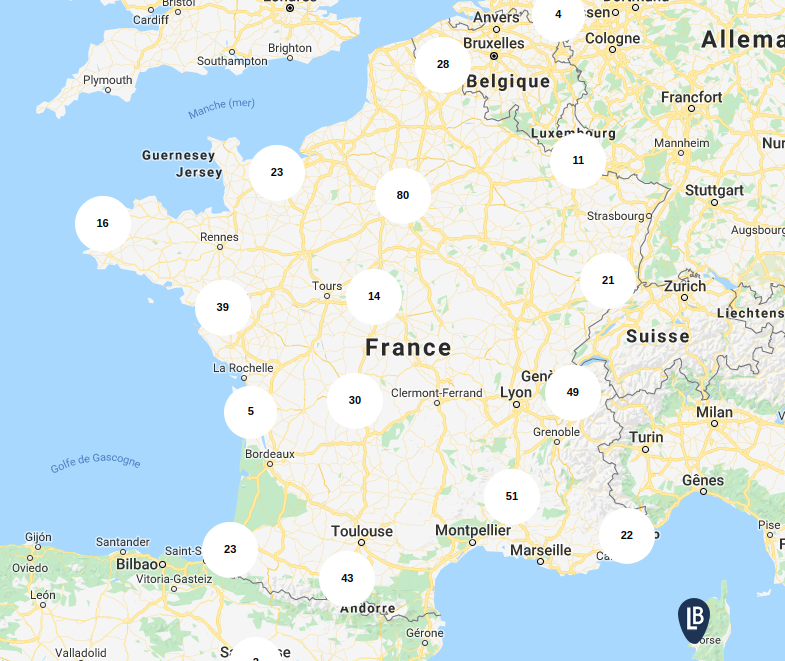THE NUDE PAINTING
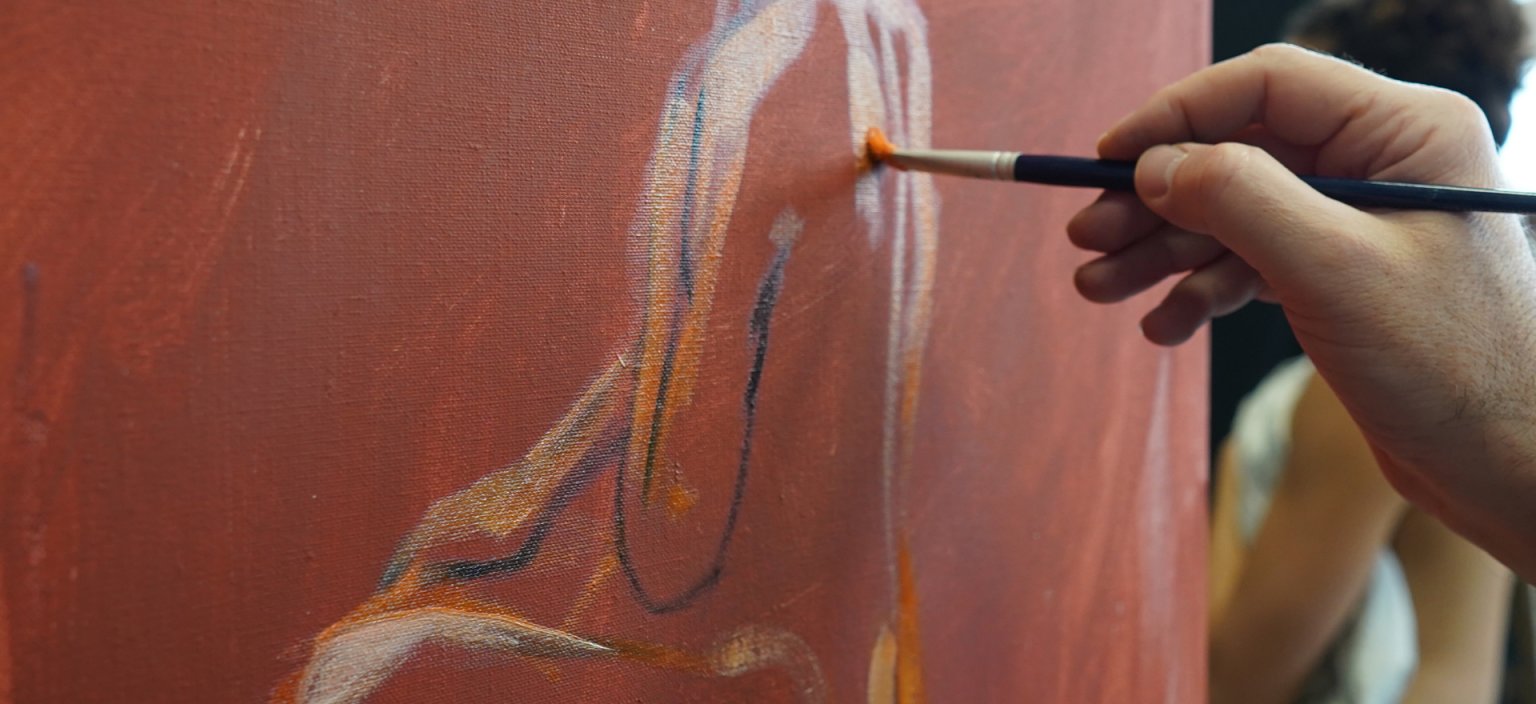
WHY WORK ON NUDE PAINTING?
The nude is an important exercise in drawing and painting that helps artists develop their sketching skills. By working on their sketches, the artist will learn the main features of a model, while training their precision and accuracy. Like Degas and Toulouse Lautrec, who painted behind the scenes at cabarets, this exercise allows you to capture the motion of poses and gestures.
THE SKETCH
The rough outline is the foundation of the piece, completed with a brush and in colour on a prepared support. It serves as a working base for the application of layers of paint.
When you start your sketch, try not to centre your subject too much. Instead, create quick a freehand drawing, which will be corrected little by little as the layers of paint are applied. If you are using a photo of a model, you can use the grid method to help with the composition.
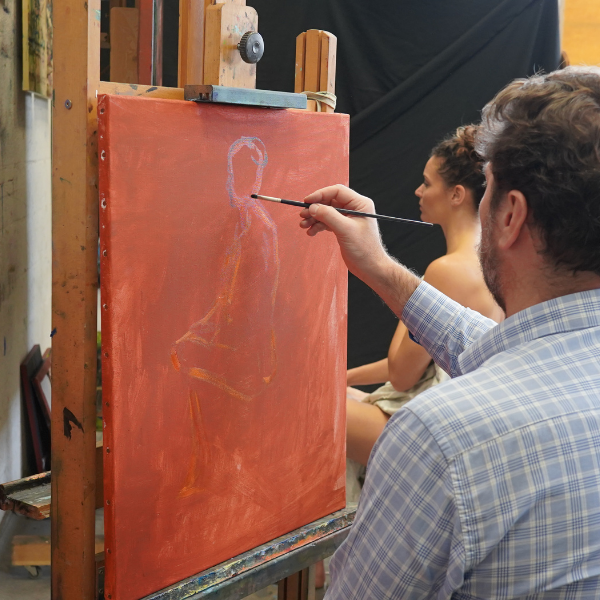
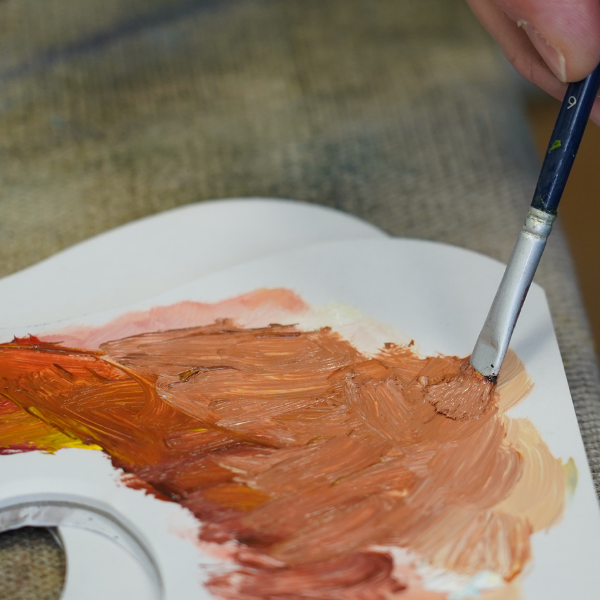
THE SKIN TONE
Recreating your model’s complexion requires you to achieve a balance between warm and cold colours. Remember, it is easier to lighten a colour than to darken it, so start by mixing the three primary colours in equal parts. Then create secondary colours by mixing primary colours, adjusting your tint by gradually adding small amounts of paint.
The yellow will lighten the mixture, giving the colour a warmer undertone. Dark purple, natural sienna and burnt umber are typically used to achieve darker skin tones. White alone will only lower the tonal value of the colour, it should be used sparingly.
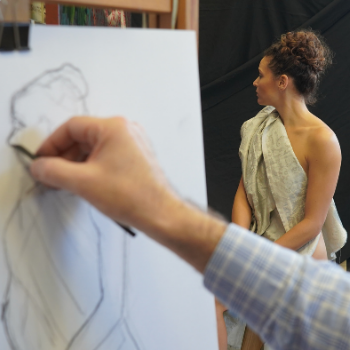
THE COMPOSITION
Before painting your sketch on the canvas, start by making several charcoal sketches of your model on a sheet. This will help you identify their main features. Work on the composition and practice maintaining the precision and accuracy of the drawing.
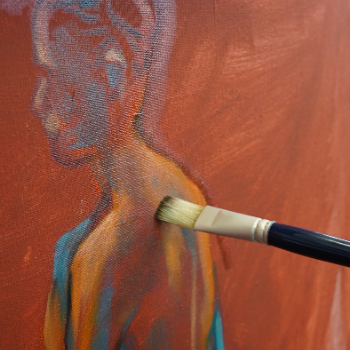
A COLOURED BACKGROUND
When painting a nude, it is important to start with a coloured background. This gives you a dominant colour from the start, and allows you to play with the colours as you work. The background interacts with the colour and is an integral part of the canvas.
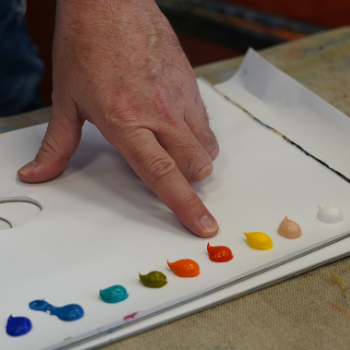
DEVELOPING CONTRAST
Developing contrast is the process of working with light to balance the painting and reveal the subject’s shapes. Raise or lower the tones of your artwork by adding lighter colours like yellow and white and darker ones like Payne's grey.
WATCH THE VIDEO
START THE PROGRAMME
Click on the arrows to see available tutorials
FIND OUR PRODUCTS
OUR SHOPS
Use our store locator to find your nearest stockist.
